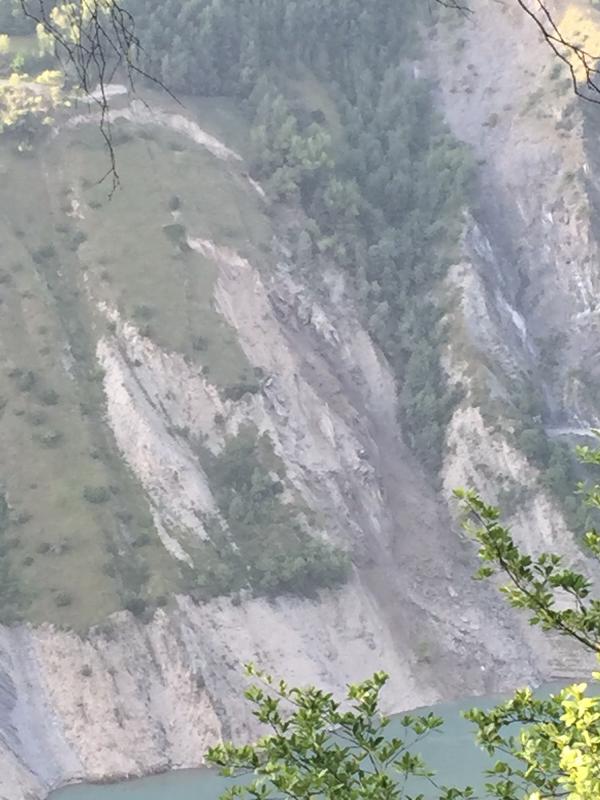6 July 2015
Lac du Chambon landslide: accelerated movement may indicate approaching failure?
Posted by Dave Petley
Lac du Chambon landslide
Yesterday, French newspapers reported significantly increased rates of movement of the Lac du Chambon landslide in Isere, France. This is the landslide that has caused a diversion of one of the key mountain sections of the 2015 Tour de France race. For example, Europe 1 (in French) reported that movement of the Lac du Chambon landslide had increased to 2 metres per day. On Saturday the landslide early warning sirens were set off to warn of imminent collapse, but as of the time of the articles this had not occurred. However, several thousand tonnes of rock have been released from the slope, which may well indicate precursory activity as the mass actively deforms.
Various news outlets have images of the landslide, which has deformed greatly since I write about it last. However, the best source of information is the SAGE Ingeniere twitter feed: @SAGE_INGE (in French), from which the images below are taken
This first image shows the whole deforming mass of the Lac du Chambon landslide:
.
Note the large rear tension crack and the extensive rockfall activity on the lateral shear. Meanwhile, this higher resolution image shows the deforming landslide body in more detail:
.
The tension cracks running almost directly downslope are interesting – these appear to be controlled by the rock mass structure, and probably indicate very high levels of internal deformation and shearing.
Last night @SAGE_INGE tweeted:
Cf modèle établi, le phénomène de rupture amorcé hier soir s’est prolongé avec une fracturation importante du massif en mouvement
Which translated indicates that the models have established that the phenomenon of rupture began the previous evening and that significant fracturing was occurring. This should indicate that failure could occur reasonably soon, although predicting the time of collapse in such a complex rock mass is far from trivial.




 Dave Petley is the Vice-Chancellor of the University of Hull in the United Kingdom. His blog provides commentary and analysis of landslide events occurring worldwide, including the landslides themselves, latest research, and conferences and meetings.
Dave Petley is the Vice-Chancellor of the University of Hull in the United Kingdom. His blog provides commentary and analysis of landslide events occurring worldwide, including the landslides themselves, latest research, and conferences and meetings.